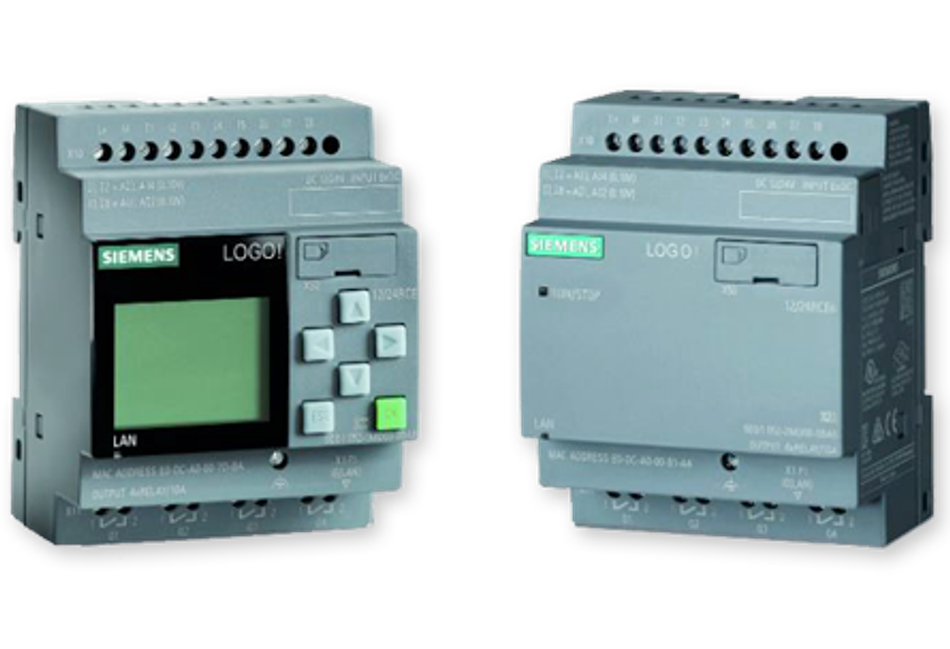Siemens LOGO! Case Study
When a HVAC manufacturer needed help with their design of a refrigerant leak detection control panel Rowse were the company they asked for assistance. Having extensive knowledge of control and automation products we were ideally positioned to offer assistance on the project.

Siemens LOGO! Case Study
Tags
This article was first published on
www.rowse.co.ukThe customer was developing a new product to comply with and exceed the requirements of the newly released BS EN 378-1:2016 standard (Refrigerating systems and heat pumps-Safety and environmental requirements). In particular, the new standard specified that when refrigerant levels in a room exceed 0.44kg/m3, the HVAC system should automatically isolate and pump back any remaining refrigerant gas from the indoor units to the outdoor unit. In the unlikely event of a refrigerant leak in a small room, the concentration level could be enough to be harmful to the occupant. The project was a significant new development for our customer and if successful would be a world-leading development in HVAC systems.
Design and Functions
The system needed to work with the companies already developed HVAC units and utilise the existing inbuilt inputs and outputs for feedback and signalling. The already established inputs and outputs consisted of some digital inputs and outputs along with some analogue signalling. The outputs offered to monitor both external leak detection and internal leak detection with additional temperature sensing and feedback and signalling of the isolation valves and external alarm signals.
The control panel continuously monitors and evaluates the system, if the predetermined parameters are exceeded, then the system would then alarm and isolate and pump the refrigerant gas from the system. One of the unique features of the new system would be that specific isolation of a section of refrigerant pipework could be isolated rather than isolating the complete system which is common in the industry and significant technical advantage.

Siemens LOGO! 8
Utilising the new range of Siemens LOGO! 8 programmable logic relays Rowse developed a system that could fulfil the requirements of both the customer and the new standard. By using the LOGO! the customer could take advantage of the intuitive programming capability, this was especially important as the end users of the equipment and maintenance engineers working on the installed equipment would have little or no experience working with PLC's or programmable devices. The LOGO! could also be password protected to protect the intellectual copyright of the program and to stop unauthorised access and modification to the program which could potentially have harmful consequences.
To complement the Siemens LOGO! the new range of Siemens Sirius Act Pushbuttons was utilised to offer local control and signalling of the system, this consisted of visual signalling devices, and audible sounder and pushbutton and selector switches.
By using the LOGO! and Sirius Act control products supplied by Rowse the customer could produce a small, cost-effective unit that was a market leading product. Not only did the new control panel offer significant technical benefits over existing systems, it could also be retrofitted to older systems of HVAC saving customers time and money.
One of the reasons the LOGO! was chosen was the ability to upload new programs into the device without having any programming experience; it is as simple inserting a pre-written SD memory card into the card reader on the front of the LOGO! device, this allows the company to send out any future software updates to its customers in a cost-effective manner. The LOGO! Soft Comfort software was used to write the software program; we were able to simulate various program editions and optimise and configure the hardware requirements using drag and drop functions.
By introducing the new technology, the companies service engineers would also require product training on the Siemens LOGO! also, the LOGO! Software. Rowse arranged training at our in-house training facility by qualified Siemens engineers; the training would provide the service engineers with the required product knowledge to support the new control panel in the field and offer their customers remote support.
Since the launch of the product into the EMEA market, the Refrigerant Control System has received many accolades and plaudits and even received an award at the National ACR & Heat Pump Awards.
Siemens LOGO! Flexibility
Going forward we are already discussing new product developments and enhanced features to add to the product; we are currently looking into utilising the inbuilt web server for remote monitoring and control; this would allow the service engineering department to offer remote diagnostics of systems. With the latest LOGO! software, the web server can be configured for control by mobile devices such as phones or iPad's. Another option is integrating the control panel into a buildings KNX building bus system as an intelligent controller via the LOGO! CMK 2000 KNX Module.
Siemens LOGO! CMK 2000 transforms the typical binary or analogue PLC signals into KNX telegrams for communication with other KNX actuators. It also can read KNX telegrams and set the corresponding signal levels for the LOGO! The flexibility of the LOGO! allows it to be a master or slave of the synchronisation.
This article was originally posted on https://www.rowse.co.uk/blog/post/siemens-logo-case-study
Tags